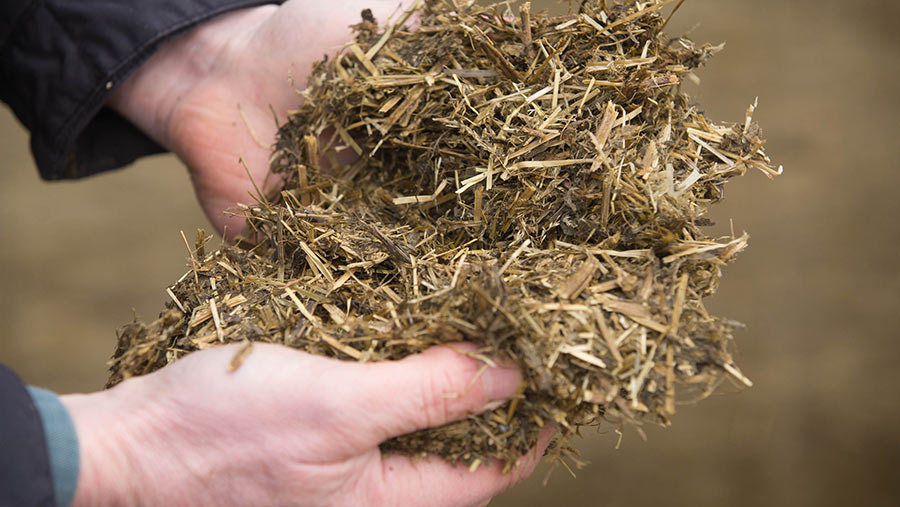Why silage sampling is vital for forage value after drought
 © Tim Scrivener
© Tim Scrivener Silage analysis will be more important than ever this autumn to understand how drought conditions have affected forage variability.
In many cases, farmers will be faced with high dry matter (DM) silage, which Lientjie Colahan of Lallemand Animal Nutrition likens to “eating a dry breakfast cereal without any milk”.
See also: Guide to maximising fibre potential in grass silage
“Some farmers have got very dry silage; some will be short of silage for the winter, having produced lower volumes; and others have been forced to start feeding their winter feedstocks early due to a lack of grass growth,” says Mrs Colahan.
“It’s important for farmers to get their silage analysed so they can draw up plans to maximise the value of the forage available to them,” she says.
Palatability
Sorting can be an issue in total mixed rations that include high DM silage, she says. This can increase the risk of digestive upsets and acidosis, which can severely hamper rumen function and feed efficiency.
“Adding water to the ration can be a simple, yet effective option for dealing with this,” she advises. However, cows will need to eat a higher total volume of silage to receive the same DM as they would get from drier silage.
“Wet silage also tends to create an increased acid load in the rumen, due to higher lactic acid concentrations in the silage, so farmers should look to balance wet silage with drier silages such as wholecrop cereal silage, where available,” she adds.
Silage analysis in five steps
- Sample about 22cm back from the silage face
- Take nine samples in total in a W shape
- Mix samples well in a bucket, then tip the contents onto a clean surface
- Divide evenly until you get a 0.5kg sample size for bagging and sending to the lab
- Test silage clamps every four weeks over winter and use the analysis to rebalance rations where needed
Source: AHDB
